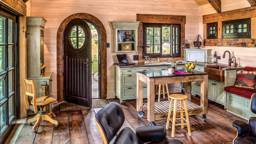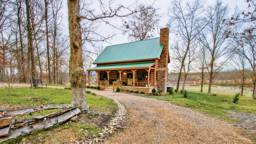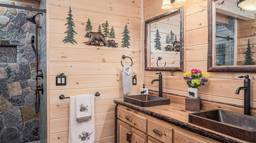
Today’s newer, eco-friendly fireplaces offer tremendous advancements in energy efficiency, generating more heat on less fuel — while saving money to boot. New technology greatly reduces the amount of smoke pollutants released into the environment, and some manufacturers are now even using recycled metals to build fireplaces. Will upgrading your fireplace make much of a difference? Definitely.
Officials and homeowners in Libby, Mont., cooperated with the Environmental Protection Agency (EPA) and the hearth industry to replace every old wood stove and fireplace insert in their tiny town with new clean-burning models. Residents immediately saw air quality improve by 30 percent outdoors and 70 percent indoors. Imagine the benefits if this change happened nationwide. If you are thinking of “greening” your fireplace, here are six things you need to know:
Up In Smoke — No More
We all know burning wood — an abundant, renewable resource — offers environmental advantages over heating with fossil fuels. But, then there’s the smoke issue; traditional open-hearth fireplaces and older fireplace inserts can produce a lot of it. The good news: All wood-burning, factory-built fireplaces and fireplace inserts sold today are required to meet EPA clean-burning standards which cut smoke emissions by 85 percent. New technology creates the proper conditions of fuel, oxygen and heat to increase combustion and burn off smoke, gasses and particulates before they go up the chimney.
Heat Your Whole Cabin
Reduce your reliance on the grid with a new “heater-rated” factory built fireplace or insert. Fueled by wood or gas, it’s efficient enough to heat your entire cabin. Fans and blowers circulate heat from your fireplace through ductwork to reach all your rooms, and some units can even supply hot water and radiant heat systems too.
A Better Gas Fireplace
All gas fireplaces are low on the emissions scale, but new condensing gas fireplaces go even further. Extremely efficient, they direct over 90 percent of the heat energy from the gas burner into your home, not up the flue. This maximizes your energy dollars, cuts emissions and reduces exhaust temperatures by about 75 percent over standard gas fireplaces. The unit also performs double duty as a humidifier by capturing the condensed water vapor and evaporating it into the room. That’s one less appliance to run.
Energy-Saving Pilot System
New intermittent pilot ignition systems on some gas fireplaces and inserts provide an ignition flame only when needed. They conserve fuel and money over standing pilot ignitions with a continuous flame.
Eco-Friendly Pellet Fireplaces
What makes pellet fireplace inserts a smart choice? For one, pellet fuels are made of recycled wood scraps and sawdust, diverting these waste materials from landfills. They also have the lowest emissions of any woodburning products. And, it doesn’t hurt that they are among the least expensive hearth fuels available.
Burning Alcohol
Beyond hearth units fueled by pellets, wood and gas, there are alcohol-burning fireplaces. Such fireplaces include the EcoSmart Fire systems that are fueled by clean-burning, denatured ethanol and generate enough warmth to heat an 18x20-foot room. And there’s the portable Indoor/Outdoor Fire Cube, by John Beck Paper & Steel, that burns an alcohol-based gel. Fireplaces like these require no installation or gas supply, produce no smoke or soot emissions and the alcohol is a renewable resource.
Electric Fireplaces Yield Zero Emissions
If you are after ambiance more than heat from your fireplace, consider replacing it with an electric unit. Today’s electric fireplaces give off zero emissions, while offering increasingly realistic flames and just enough heat to gently warm up a room. Lisa Readie Mayer prefers to write her articles in front of her fireplace.










